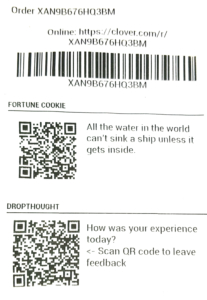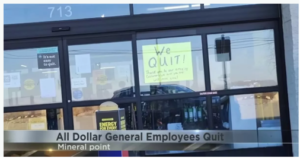Do you know how much small and medium-size businesses (SMEs) contribute to total GDP growth? This segment, comprised of your friends, moms, dads, and others is an enormous contributor to the general welfare of our communities.
Companies with fewer than 500 employees:
- Employ 48% of the total workforce (US Census Bureau, 2016)
- Produce 44.5% of GDP (US Census, 2010)
But I am concerned. Small businesses are losing ground to larger corporations – not in employment, but in revenues. When the Census was taken in 2001, businesses with fewer than 500 employees contributed more than half of GDP (50.5%). However, only nine years later, that contribution had reduced to 44.5%, giving large corporations a 55.6% share.
What is causing this inequality, and is there something we can do about it?
Rising to the Customer Experience Challenge
Since the Millennium, small businesses have lost ground on one of their historical advantages over large corporations: their understanding of their customers.
Small businesses have always understood their patrons better than big corporations. They understand people because they are one of the people, sending their children to the same schools, shopping at the same grocery stores, walking their dogs around the same block as everyone else. They know the community, whereas large corporations have been unable to empathize or understand what we want… until recently.
Nowadays, large corporations are trying incredibly hard to walk in their customers’ shoes. They spend significant resources to glean information about what we want, using Big Data, customer surveys, focus groups, and more. They are building a deep understanding of the customer experience and using that understanding to better satisfy their customers, which is the key to growth.
How many small businesses, who contribute so much in every nook and cranny of our neighborhoods, understand the value of customer experience? Do they adopt the best practices developed by major corporations? What if they did?
I would submit that few small businesses are paying attention to this critical new differentiator in business. Here is a case in point.
A Local Mediterranean Restaurant
I had dinner with a friend at a local restaurant in the community. The meal was wonderful. The service, provided by the owner’s daughter, Ana, was friendly, charming and welcoming. When I received the check, I noticed something very interesting: There was a QR code at the bottom.

How many of you scan QR codes to access feedback surveys? I asked the owner how much feedback he received. He was surprised I asked. He had no idea that there was any feedback nor how to access any feedback his business had received. In fact, he had no idea what the “black and white” images on the receipt meant.
His Point of Sale (POS) system came with a QR-code feedback mechanism as a standard feature. But because the owner had no access to data, he had no idea what any of his customers thought of his food, the ambiance, quality of service, or any other CX variables that are important to guest satisfaction. Consequently, there were no ideas on the table for how to improve his business.
The Internet has opened up global communication, but it has also quieted person-to-person communication. We are less likely to complain, but more likely to write a poor review on Yelp. This trend has reduced the historical advantage of small business while widening the gap for large corporations who have mastered digital feedback mechanisms.
Meanwhile, the Mediterranean restaurateur has an opportunity. Regardless of whether he relies on QR codes or not, he can implement a customer feedback mechanism, so that he can better understand what he needs to do to better satisfy his guests.
How many sole proprietors and LLCs are out there waiting to be guided on building a customer-centric focus? How many would consider feedback systems that could provide insights on how to build reputation, customer loyalty, and advocacy?
I suspect that most small businesses are sitting on opportunities to learn what their customers want next.
Small business owners can do four things to get started with Customer Experience:
- Give customers a convenient opportunity to provide feedback
- Ensure the feedback loop connects to the owner
- Review feedback and make changes
- Learn more about CX (Customer Experience)






